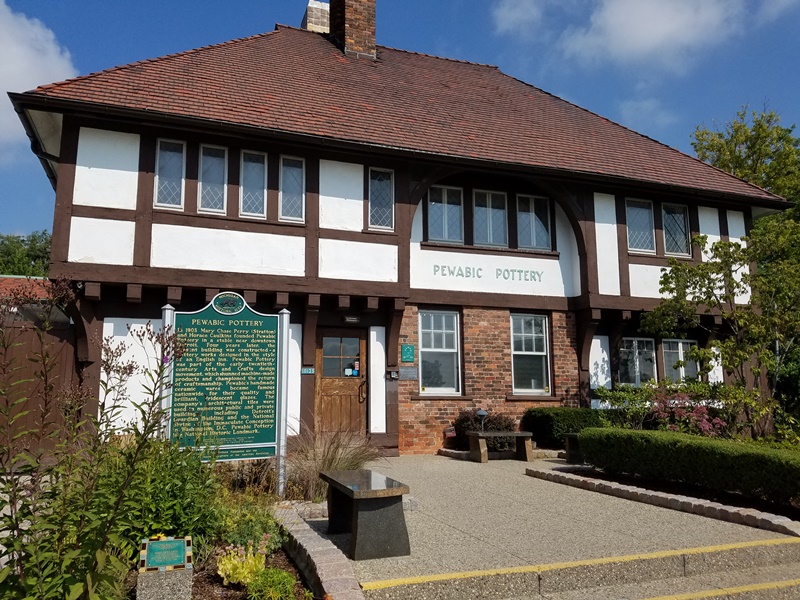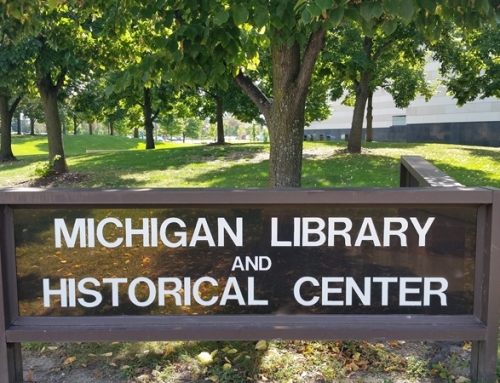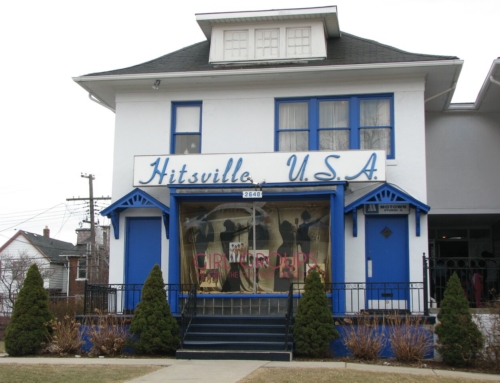Home to revolutionary artistic competition ArtPrize in Grand Rapids and the world renown museum, Detroit Institute of Arts, it is no surprise that Michigan has long been a state that welcomes creators and their art. Below is a brief sampling of the many talented individuals who have found inspiration in the Great Lakes State.
Patricia Hill Burnett grew up in Detroit and studied for a time at Wayne State. A former Miss Michigan and runner-up to Miss America, she was also a respect portrait artist and women’s rights activist. Her work appears in galleries in the United States and in London, Paris, and Rome, and was commissioned to paint such notables as Indira Ghandi, Joyce Carol Oates, Valentina Tarashkova, and Corazon Aquino as well as a 20-painting series of living women of achievement for the Women’s Hall of Fame in Seneca Falls. She was chosen to occupy a studio in the Scarab Club in Detroit, the first woman to be so recognized by that all-male artists’ club.
Emily Helen Butterfield was known statewide in the 1930s as both an artist and architect. She was born in Algonac, and attended Detroit Public Schools. She began her art education at the age of seven and became Michigan’s first licensed female architect in 1907. Butterfield’s artistic skills included painting with water colors and pen and ink sketching. She exhibited frequently in the J.L. Hudson Gallery and at the Toledo Artists’ Club. Her love of nature and her native state are depicted in many of her watercolor paintings.
Horace Caulkins was a ceramic artist who lived in Detroit and began worked as a dental supplier. Through that job, he developed a kiln for firing dental enamel, the products from which were marketed under the trade name of Revelation. In 1903 he formed a partnership with Mary Chase Perry, and combined his technology with her understanding of glazes, still using the name Revelation. In 1904 the name was changed to Pewabic Pottery, which still exists today.
Gwen Frostic was born in Sandusky, Michigan as Sara Gwendolen Frostic. She showed an early interest and aptitude for art, especially at Theodore Roosevelt High School in Wyandotte, where she was known for using a band saw to create event posters for the school. She continued her studies at Eastern Michigan University and then Western, while honing her skills working with metal and plastic. During WWII there was a lack of metal to work with, so she turned to linoleum block carving, which she turned into stationery goods and prints. That led to her own printing company, Presscraft Papers.
Tyree Guyton was raised on Heidelberg Street, a residential neighborhood on Detroit’s east side, which influenced him throughout his life. In his childhood, he frequently visited the Detroit Institute of the Arts with his grandfather, and after a stint in the Army began taking night classes under at the College for Creative Studies. He rose to national acclaim through his Heidelberg Project, an outdoor art project in his old neighborhood. At first, the project consisted of his painting a series of houses with bright dots of many colors and attaching salvaged items to the houses. It was a constantly evolving work that transformed struggling inner-city neighborhood into one in which neighbors took pride and where visitors were many and welcomed.
Robert B. Hopkin was the leading painter in mid to late 19th-century Detroit and was recognized during his lifetime. He created over 390 oils and watercolors, including vistas of the Great Lakes, the local landscape, and views from his travels to Ireland, Scotland, and throughout the U.S. Detroit’s Scarab Club, a collaborative site for artists, was originally named after him.
Percy Ives painted portraits of many of the prominent men of Michigan and of a number outside of the state, including President Grover Cleveland. Among his works in the Detroit Institute of Arts is a group portrait of early creators of the Founders Society of the Museum of Art. He received his first artistic training in his father’s studio, before studying abroad, and then returning home to open his own studio on Montcalm.
Leonard D. Jungwirth was a sculptor born in Detroit. He originally studied with his father Joachim Jungwirth, a Detroit wood carver, then began his formal education at the School of Fine Arts and Wayne State University. Among his most notable works are a statue of Gabriel Richard located at the entrance to the Belle Isle Bridge and The Spartan, which he created while working at Michigan State.
Nora Chapa Mendoza has worked for more than 40 years as a full-time visual artist, a painter, who also served the state as a member of the Michigan Council for Arts and Cultural Affairs. Fidel Castro was presented with one of her paintings, “Comaneros del Trabajo” depicting indigenous women workers. Nora was also one of the eight artists selected to work on the renovation of the Detroit Music Hall.
Francis Petrus Paulus was as a painter and etcher whose work commanded respect internationally. He served as an instructor in painting and drawing at the Detroit Institute of Arts from 1880 to 1890. From 1896 to 1898 he was director of the Ann Arbor Art School. He was also a trustee of the Detroit Art Museum and the Founders Society.
Betsy Graves Reyneau was raised in Detroit, and although discouraged by her father from becoming an artist on the grounds that it was inappropriate for a woman, pursued that career. Immense racial tension of her times prompted Reyneau to devote much of her life to painting portraits of distinguished Americans of African descent. In the 1960s, thirty of her portraits of Black Americans were displayed at the Smithsonian. The exhibit stimulated such intense interest that it was sent on a national tour, beginning at the Detroit Institute of Arts. Prominent figures who posed for her portraits included Mary McLeod Bethune, George Washington Carver, Joe Louis and Thurgood Marshall.
Gilda Snowden was a graduate of Cass Technical High School and Wayne State University, where she received a Bachelor of Fine Arts, Master of Art and Master of Fine Arts in Painting. She was Interim Chair and Professor of Fine Arts at the College for Creative Studies, Detroit and also Gallery Director of the Detroit Repertory Theatre. Snowden’s works have been exhibited throughout the United States, as well as in Mexico, Canada and West Africa.
Mary Chase Perry Stratton is recognized historically for the iridescent glazes of her pottery and tile installations, which led to the founding of Pewabic Pottery. Born in Hancock, she worked with clay even as a child, but developed her craft through studies at the Detroit Art Academy, among other institutions. Her early vases created in the Art Nouveau style are highly prized by collectors, but it is the decorative fountains and other large tile installations that brought the name Pewabic and her brilliant blue glazes to the attention of the general public. Today, major Pewabic commissions adorn the Detroit Public Library, the Cathedral of St. John the Divine in New York, the National Shrine of the Immaculate Conception, and many other public buildings.
Lottie Wilson was born Charlotte Wilson in Niles, but would be known as Lottie by the time she lived and worked as an artist in Bay City. A nationally renowned artist and suffragist, Lottie became the first African‐American to graduate from the School of the Art Institute of Chicago. Proficient in several mediums, she created busts of famous African Americans like Frederick Douglas and Phillis Wheatley. President Theodore Roosevelt displayed Wilson’s work in The White House, making Lottie the first African‐American to have her work exhibited there. Her painted her interpretation of the significant meeting between the famous abolitionist speaker Sojourner Truth and Abraham Lincoln hangs in the Niles Community Library in her hometown.





Leave A Comment
You must be logged in to post a comment.